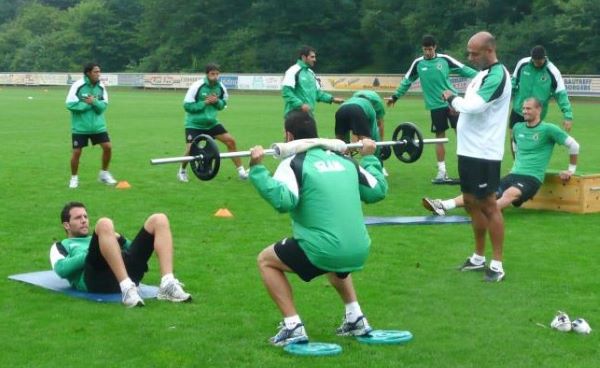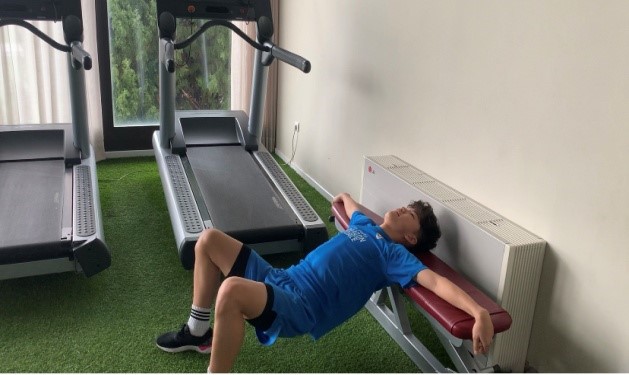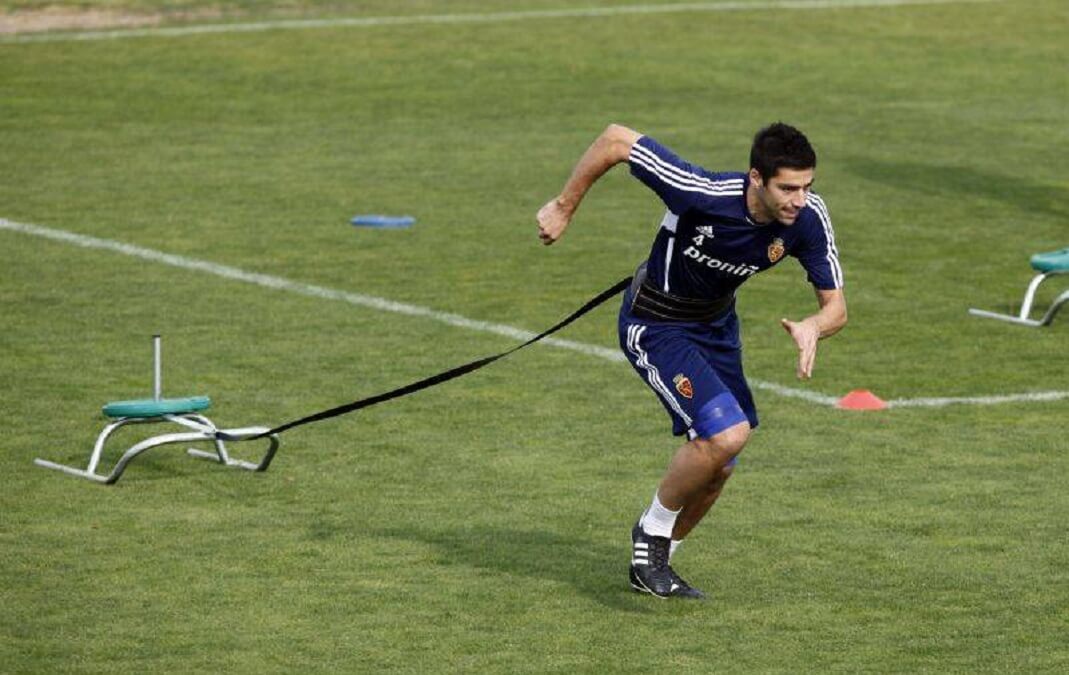STRENGTH TRAINING AS PART OF THE CONDITIONAL VARIABLES IN FOOTBALL
Football is a sport of an intermittent nature where high intensity efforts such as jumping, sprinting, changes of direction, kicking and contact alternate with periods of incomplete recovery.
Therefore, football players will need high levels of fitness, developing a specific combination of strength, speed and endurance, in order to perform at a high level throughout the match.

What variables do we work on in the academy in physical preparation?
Therefore, the conditional variables in the physical preparation that we work on in the academy with our players are the following:

Strength in physical training
Of all of them, there is one that we give special importance to at the academy and that we consider to be the basis of physical preparation: Strength, which is fundamental for the prevention of injuries and the increase of performance.

How does strength help to increase performance?
You only have to analyse and see that most goals in football are preceded by an explosive action of short duration, which translates into actions where the application of strength in a short time is very important (jumps, acceleration and braking, sprints, changes of direction…) and in the end these actions are what determine performance.

Also having better levels of strength will improve endurance in general and the ability to repeat high intensity sprints (RSA) that are so common in a football match.

How does strength help in post-match recovery?
Not only that, but it will also be an important factor in post-match recovery. According to a study (Owen et al 2015), an inverse relationship was observed between players’ lower body strength and CK (creatinkinase) values 48 hours post-match. This enzyme is one of the main markers of muscle fatigue in the body, and it has been seen that in players with better levels of strength in the lower body, each match should involve less effort and therefore the fatigue accumulated in them would be less and post-match recovery would be optimised.

How does strength help in injury prevention?
On the other hand, strength training is also very important in the prevention of injuries. In football, injuries have a series of repercussions (economic, sporting and psychological) that affect both the athletes and the sporting entity to which they belong. Muscle imbalances, lack of eccentric strength of the musculature to withstand increases in tension, fatigue or an incorrect motor pattern, are the main risk factors for injury in football, and all this can be greatly improved with proper strength training.

How to work on strength in the physical preparation of the football academy?
In football, the strength needs are medium-low, as the mass to be mobilised (the ball) does not reach 500 grams. Therefore, the training methodology typical of weightlifters, bodybuilders or speed athletes, where higher levels of strength are required and for improvements, much more intensity in strength training is needed.

The use of low loads with a low effort character as proposed by authors such as Gonzalez-Badillo, Pareja-Blanco, De Hoyo etc, will be ideal for our footballers, as it must be taken into account that they often train on the field after strength training in the gym, and if this produces too much fatigue, the performance and technical-tactical quality of the training on the field would be reduced.

1st Functional assessment test
When prescribing strength training for academy players, we first carry out functional assessment tests to see if there are any mobility deficits in the joints and assess the quality of movement.
2nd Schedule the training
If all this goes well, we start to assess the strength levels and programme the training. Taking into account the results of the tests, the individual needs of the players, their age, the position they play and their maturity development (biological age), we send them the training sessions they have to do in the gym, always reviewed by our physical trainers, to ensure that they carry out the training programme correctly.

Cycles of strength training
Normally the training is done in cycles of about 6-8 weeks, where at the end the results are evaluated and a new training cycle is prescribed.

As for the physical preparation exercises, we start with progressions of simple push ups, pull ups, hip dominants, knee dominants and core stability exercises. And as we change training cycles and we see that they meet the established criteria, we change the exercises to try to get to more specific unilateral work.

3º Take into account the training loads
All this is in accordance with the training loads that they do on the field, since depending on the weeks, they may vary and it is important to control that the players do not become too fatigued because of the risk that this entails.







